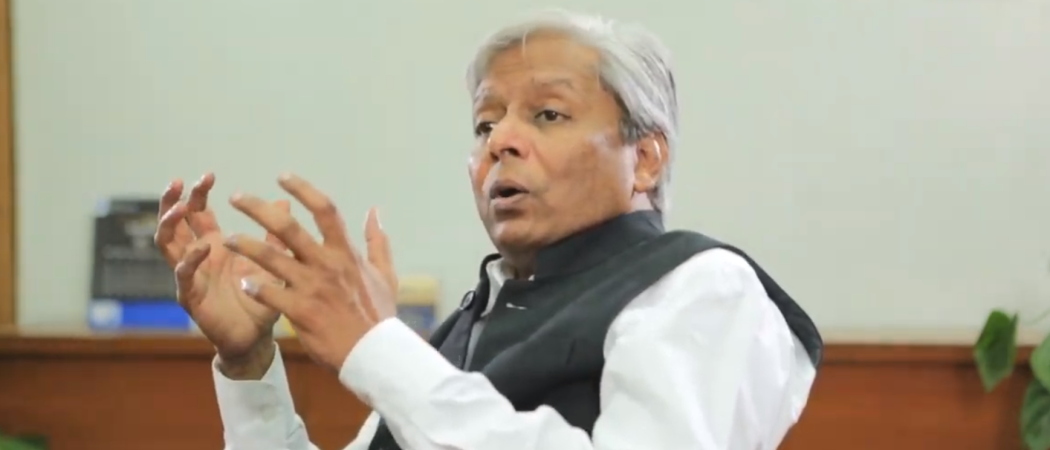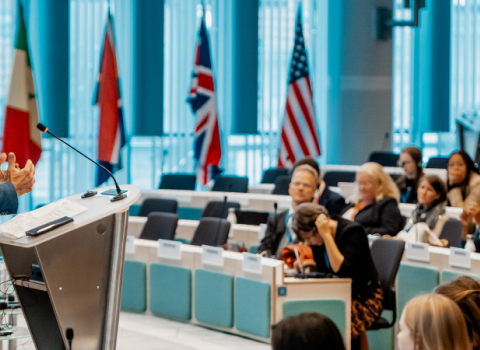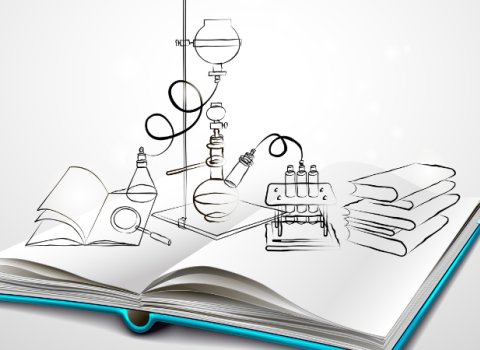Krishnaswamy VijayRaghavan outlines benefits of radical Plan S, saying ‘access to knowledge should be free’

Krishnaswamy VijayRaghavan, India's science adviser. Screen capture from Living Science
The Indian government’s principal science adviser says the country is joining Plan S, a bold initiative launched last year by a group of European funders to ensure that, by 2020, taxpayer-funded research results are made immediately open.
Krishnaswamy VijayRaghavan, a molecular biologist who has been advising prime minister Narendra Modi’s government for almost a year, outlined the benefits of Plan S in a series of tweets on Tuesday.
“Access, dissemination [and] use of knowledge should be free; allowing all to build on research funded by the Indian government,” VijayRaghavan wrote.
His support gives fresh momentum to the controversial Plan S, which has received backing from the European Research Council and 13 national funding bodies, including agencies in France, the Netherlands and the UK. The two large philanthropic funders, Wellcome Trust and the Bill & Melinda Gates Foundation, are also on board.
Others around the world are considering whether to join the scheme that is simultaneously hailed for knocking down paywalls and criticised as an attack on academic freedom.
China’s National Science Library, its National Science and Technology Library and the Natural Science Foundation of China, have all voiced strong support for Plan S. The National Science and Technology Council of Zambia has recently joined, and backers of the plan hope others will follow.
Although there has been no official announcement of India’s involvement in Plan S, the early reaction among researchers in the country has been positive.
A “great initiative”, tweeted Rameshwar Sharma, a plant scientist at the University of Hyderabad. He said government funded science “is for all” and that journals are currently “unaffordable [for] us”.
Plan S is intended to increase pressure on a handful of influential science gatekeepers, such as Elsevier, Wiley and Springer, which stand accused of limiting the flow of scientific information through the high subscription rates of their journals.
Finding a viable alternative to the expensive subscription model is the “need of the hour” in India, said Tapasya Srivastava, a geneticist at the University of Delhi.
“For many scientists in India the decision to submit a paper for publication depends on whether they can afford the publication fee,” she said.
The country is the third biggest producer of scientific papers in the world after the US and China.
“This is a great start of the new year,” said Plan S creator and European Commission open access envoy, Robert-Jan Smits. “I thank Professor Raghavan for his leadership and for making it clear that also India will no longer accept that the results of publicly funded research [are] locked behind paywalls.” Smits developed the open access plan with Marc Schiltz, president of Science Europe, a body representing national public research funders.
“Great news that India is joining”, EU Research Commissioner Carlos Moedas tweeted on Wednesday.
Samir K Maji, a professor at the Indian Institute of Technology in Bombay, said Plan S “will significantly help many scientists to publish their work in open access journals,”
Sheeba Pakkan, a bibliometrician at Kasturba Medical College, said the plan, if adopted in full by the government, could help the country of 1.3 billion people reach “the global top” in science.
India’s higher education sector is sprawling, with 760 universities and 38,498 colleges. Financially it struggles to compete with the US, Europe or China. Despite its giant size, India has a relatively small number of researchers, and many emigrate.
Rigid hierarchies and bureaucracy are frequently cited among factors explaining India’s poor ranking in global indexes of higher education.
Funding is insufficient too, scientists argue. The average annual amount a university professor can receive for publishing and other costs is around $10,000, Sharma said, and “competition is very keen.”
Critics unmoved
India’s involvement in Plan S, if formalised by the government, would broaden the mandate of Plan S. But critics of the plan are likely to remain unmoved. A spokesman for the International Association of Scientific, Technical, and Medical Publishers said he had no comment on India’s involvement in the scheme.
A critic of Plan S, Lynn Kamerlin, a biochemist at Uppsala University in Sweden, said the critical factor is what the major US federal funders, Germany and Switzerland do. “Without these research powerhouses on board, we have a big problem if it affects our collaborative opportunities with them,” she said.
Kamerlin coordinated a letter last year signed by over 1,000 scientists, including two Nobel laureates, which criticised Plan S as “too risky for science”, “unfair”, and “a serious violation of academic freedom.”
That is because the initiative would bar researchers from publishing in top-tier journals, including Nature and Science, unless these journals “flip” their business models to open access publishing.
The Plan S organisers are currently running a public consultation on the scheme.
Publishing in these high impact journals remains the main measure of the quality of individual researchers or their work. That is something which is not lost on scientists in India, said Srivastava.
“I do believe that to stay competitive, Indian scientists would still publish in big journals if they could,” she said. “Publications in big journals is still given importance while evaluating grant proposals, job switches, career advancements, memberships and fellowships. A movement to disregard impact factor has to be collective, at multiple levels and we're not quite there yet.”
Srivastava believes Plan S is still, overall, the best thing for science in her country. “Indian scientists have much to gain, and need to embrace a robust Plan S that allows the community to grow together,” she said.





 A unique international forum for public research organisations and companies to connect their external engagement with strategic interests around their R&D system.
A unique international forum for public research organisations and companies to connect their external engagement with strategic interests around their R&D system.